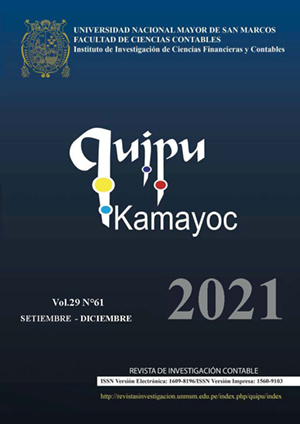Tax benefits of the agricultural sector and peruvian social- economic development
DOI:
https://doi.org/10.15381/quipu.v29i61.21153Keywords:
tax benefits, Peruvian agricultural sector, tax expenditureAbstract
Objective: Determine the relationship between the agrarian sector’s tax benefits and the Peruvian economic and social development. Method: The study was based on the analytical and synthetic method of the quantitative variables’ relationships investigated under a non-experimental design, using documentary analysis and the statistical model of canonical correlation as techniques, considering public information, in a cross-sectional period (2005-2019). Results: The Hotellings indicator evidences a significant relationship of both groups of variables; however, before a disaggregated analysis, the correlations show questionable results compared to the results of the state of the art of the investigated topic. Conclusions: There are direct and significant relationships between the gross domestic product, the sector's exports, tax formalization and corporate income tax payments. There is no significant direct relationship between EsSalud Expenditures and the sector’s Labor Formalization, as well as between the Internal Tax Expenditures and Labor Formalization, which is supported by the statistical test of the canonical correlation between the variables proposed in this research.
Downloads
Downloads
Published
Issue
Section
License
Copyright (c) 2021 Segundo Eloy Tuesta Bardalez, Héctor Villegas Chávez, Orlando Roberto Yupanqui Linares

This work is licensed under a Creative Commons Attribution 4.0 International License.
AUTHORS RETAIN THEIR RIGHTS:
a. Authors retain their trade mark rights and patent, and also on any process or procedure described in the article.
b. Authors retain their right to share, copy, distribute, perform and publicly communicate their article (eg, to place their article in an institutional repository or publish it in a book), with an acknowledgment of its initial publication in Quipukamayoc .
c. Authors retain theirs right to make a subsequent publication of their work, to use the article or any part thereof (eg a compilation of his papers, lecture notes, thesis, or a book), always indicating the source of publication (the originator of the work, journal, volume, number and date).






